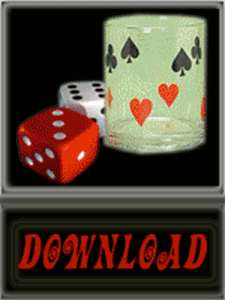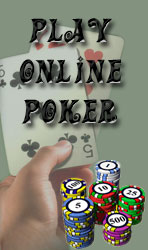Pokerwiner.com → Lessons of poker
The Delayed Semi-Bluff Raise
A third case in which calling against a possible semi-bluff might be a good play is what I might call the delayed semi-bluff raise.
It’s a play I make against very though players who frequently semi-bluff and who are thoroughly familiar with the ordinary semi-bluff raise as a response to their semi-bluffs.
Here’s how it works. In seven card stud I might have a queen showing and a queen in the hole, giving me a pair of queens, and an opponent with a king showing raises.
I suspect this person might be semi-bluffing with maybe a small pair or even less, but I just call. On the next card wee both catch blanks, and the opponent comes out firing. What I do now is raise! I raise with a pair of queens into a possible pair of kings.
It may seem like a strange play, but it adds a confusing twist to the ordinary semi-bluff raise. When I called the first bet, my opponent suspected I had queens though I could have had something like a three-flush.
Now when I raise him on fourth poker street, my opponent has to wonder whether I’ve made queens up. Unless he really does have two kings, he can’t conceivably call with something like ace, king high.
And I want him to fold even if my pair of queens is the best hand. I want him to make a mistake according to the Fundamental Theorem of Poker, because with a couple of overcards or with, say, a small pair and on overcard, he is getting sufficient odds for a call.
Suppose, though, my opponent really does have kings. We’ll, I’m not in the best of shape, but my opponent most likely won’t reraise, fearing I have queens up.
Furthermore, he’ll check to me on the next round if his hand hasn’t improved, and I can get myself a free card. Should this card happen to give me an open pair, it would be very difficult even for a pair of kings to call my bet since it looks as if a good chance I’ve now made a full house.
Summary
While calling may be a good defense against the semi-bluff in situations similar to three described, remember that normally the correct play is to fold with marginal poker hands, and if folding isn’t correct, then you should raise. We’ll conclude this chapter with an example of each response to the possible semi-bluff:
seven card stud
(Small Pot)




You




Opponent
Your opponent bets. How should you play?
You should fold without hesitation. Even though you opponent may be betting a four-flush or a straight draw, you have too many ways to lose. Your opponent might not even get the flush or straight but make a pair of 10s or kings to beat you:
Seven-Care Stud
(Medium-Sized Pot)





You








